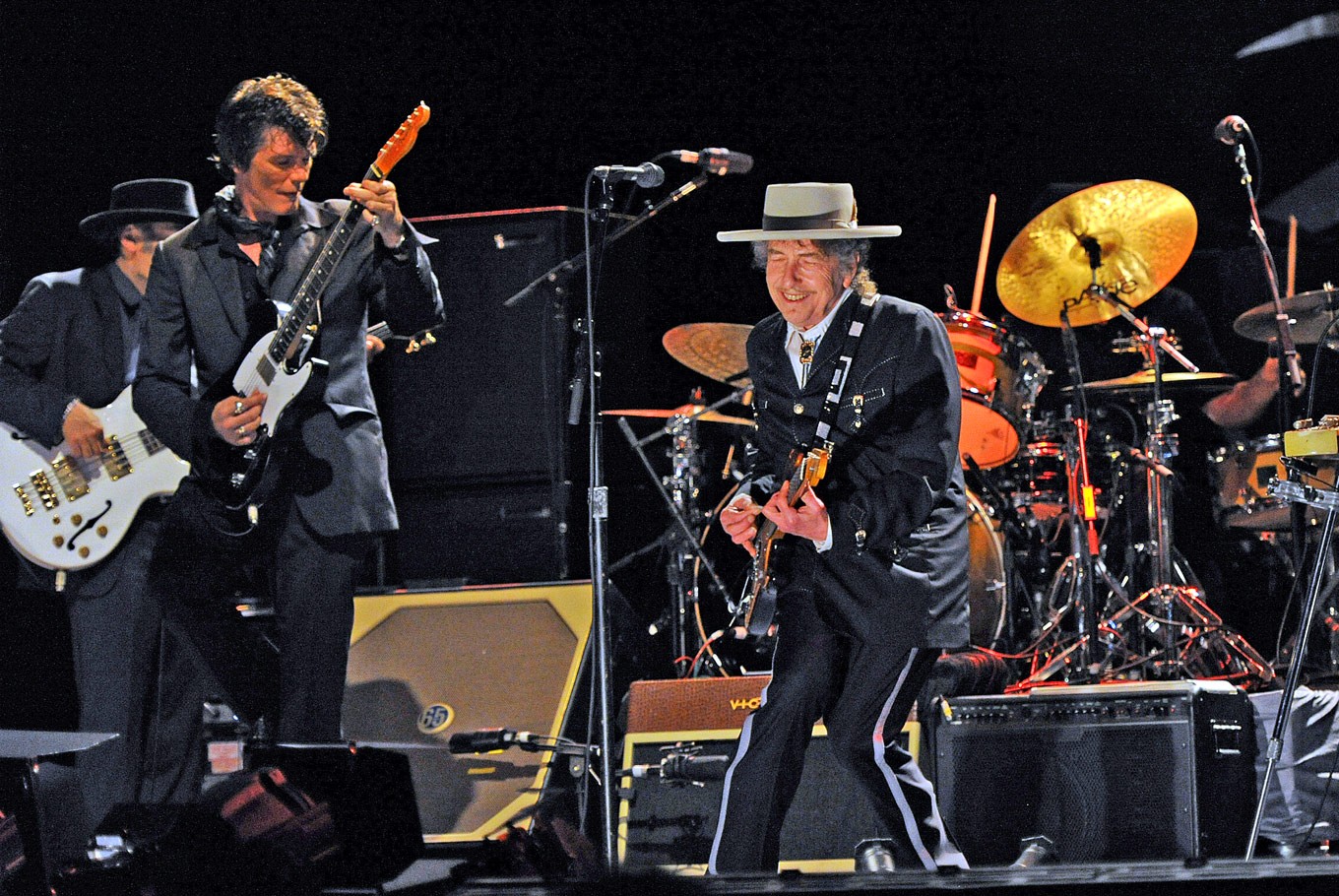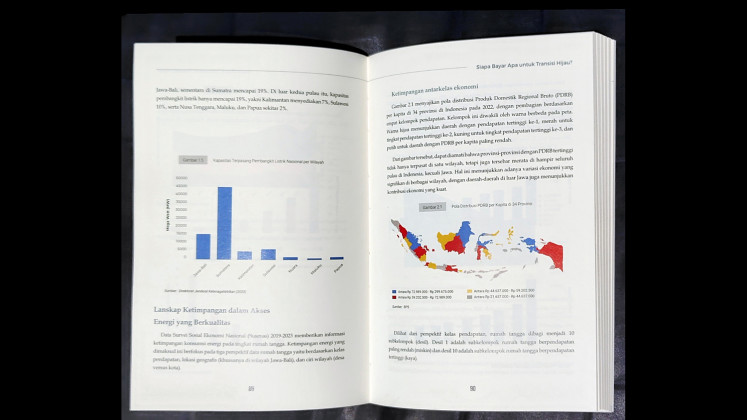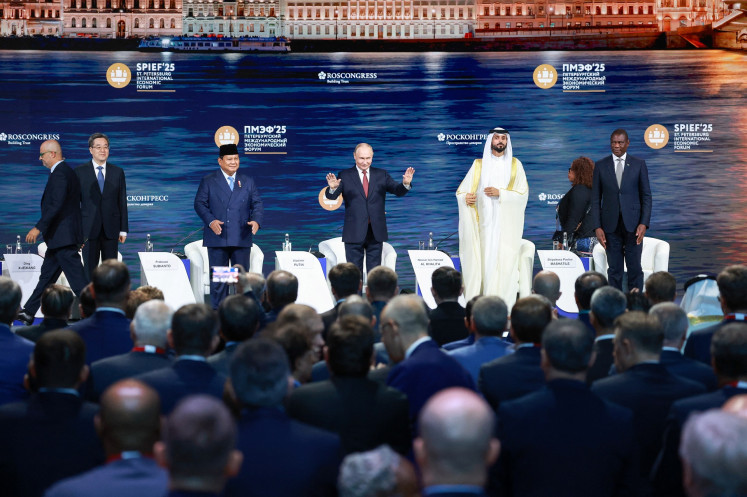Popular Reads
Top Results
Can't find what you're looking for?
View all search resultsPopular Reads
Top Results
Can't find what you're looking for?
View all search resultsJust another side to Bob Dylan
At his recent Singapore concert during his current “Never Ending Tour”, he was no longer a “preacher” of any era.
Change text size
Gift Premium Articles
to Anyone
 Legendary: American singer, songwriter, poet, artist and actor, Bob Dylan performs at the 22nd annual Bluesfest music festival near Byron Bay, Australia, in this April 2011 photo. Dylan was recently in Singapore on his “Never Ending Tour”. (AFP/Torsten Blackwood)
Legendary: American singer, songwriter, poet, artist and actor, Bob Dylan performs at the 22nd annual Bluesfest music festival near Byron Bay, Australia, in this April 2011 photo. Dylan was recently in Singapore on his “Never Ending Tour”. (AFP/Torsten Blackwood)
For someone who has shared so little of his life, Bob Dylan’s life is a book for us to read, a song for us to sing.
Any contemporary forms of remembrance, such as this one you’re reading right now, face the threat of morphing into a hagiography.
Some people — fans as well as just casual listeners — have found both solace and confusion, love and hatred in Bob Dylan’s Nobel-winning lyrics and unimpeachable music.
At first, in the early 1960s, they found someone who spoke for their woes, economic or political, in serenading a sardonic, aggrieved strike at the powerful.
Even when the protest in his folk songs was obvious by virtue of the years they were penned, Dylan’s disdain for clarity in his lyrics was already clear — that’s why “a hard rain’s gonna fall”, and not missiles.
Then he plucked his guitar and perfected his craft, gifting us a trifecta of impeccable albums between 1965 and 1966 — Bringing It All Back Home, Highway 61 Revisited and Blonde on Blonde — which would run their course as the products of yesteryear that turned into eternal soundtracks.
“He expanded folk idiom into a rich, figurative language, grafted literary and philosophical subtleties onto the protest song, revitalized folk vision by rejecting proletarian and ethnic sentimentality, then all but destroyed pure folk as contemporary form by merging it with pop,” wrote American journalist Ellen Willis in her elegant and supreme essay, “Dylan”.
The Dylan of today is used to applause. He has heard it so many times that, presumably, he could not care less if the applause was actually heckling.
At his recent Singapore concert during his current “Never Ending Tour”, he was no longer a “preacher” of any era. He was just a man, accompanied by younger musicians on guitars, drums, violin, upright bass. He had a harmonica and tinkered his piano; his voice had coarsened with time.
I never found Dylan to relieve some kind of nostalgia. I did not grow up with Dylan; I grew to love his music during high school in 2010. When I talked to friends about Dylan, I used to say that he’d be dead before I could go see him (though he played in Singapore in 2010).
But at that two-hour show, I found him to be a marvel.
I also realized that if the concerts had any faults, I could not hear them. A friend of mine who was also there remarked that Dylan was too mechanical, with little crowd interaction (no photographs of any kind or else you’d get kicked out), and playing the same set list in all of his recent concerts.
Watching a musician perform, even if it’s Dylan himself, should not be grounds to cover your critical lens, but here we are.
The songs were all right this time, including “Ballad of a Thin Man” and the title track, “Desolation Row”, from Highway 61 Revisited and “Simple Twist of Fate” and “Tangled Up in Blue” from his legendary Blood on the Tracks.
The rest came from all periods of his career, including the late-1970s era during which he became a born-again Christian (“Gotta Serve Somebody”) and also some recent material from 1997’s Time Out of Mind to 2012’s Tempest) — all reworked beyond recognition (was that really “It Ain’t Me, Babe?”).
Dylan, with his band, operated in the language of heavy blues. In performing all those tunes, Dylan was spirited and focused: the guitars brimmed with synchronization; the melodies were ridiculously knotty and satisfying. This was a thoroughly rehearsed performance. After each song, the lights dimmed, the musicians jammed briefly and then he was back, bathed in regal lighting.
One of the highlights was his rendition of “Make You Feel My Love” from Time Out of Mind. Whatever melodies the song assumed, his lyrics remained as moving as ever. To hear “Desolation Row”, even if some of the verses were excised, was an unbelievable experience.
It has never been clear whether Dylan is at peace with his life. But 700 words are more than enough to say that his legacy will forever be seared in music history — Western or other: he has even influenced folk singers like Iwan Fals.
Whatever the case, at the end of his concert, I think I noticed him flash a quick smile. And the meaning behind it did not matter.









